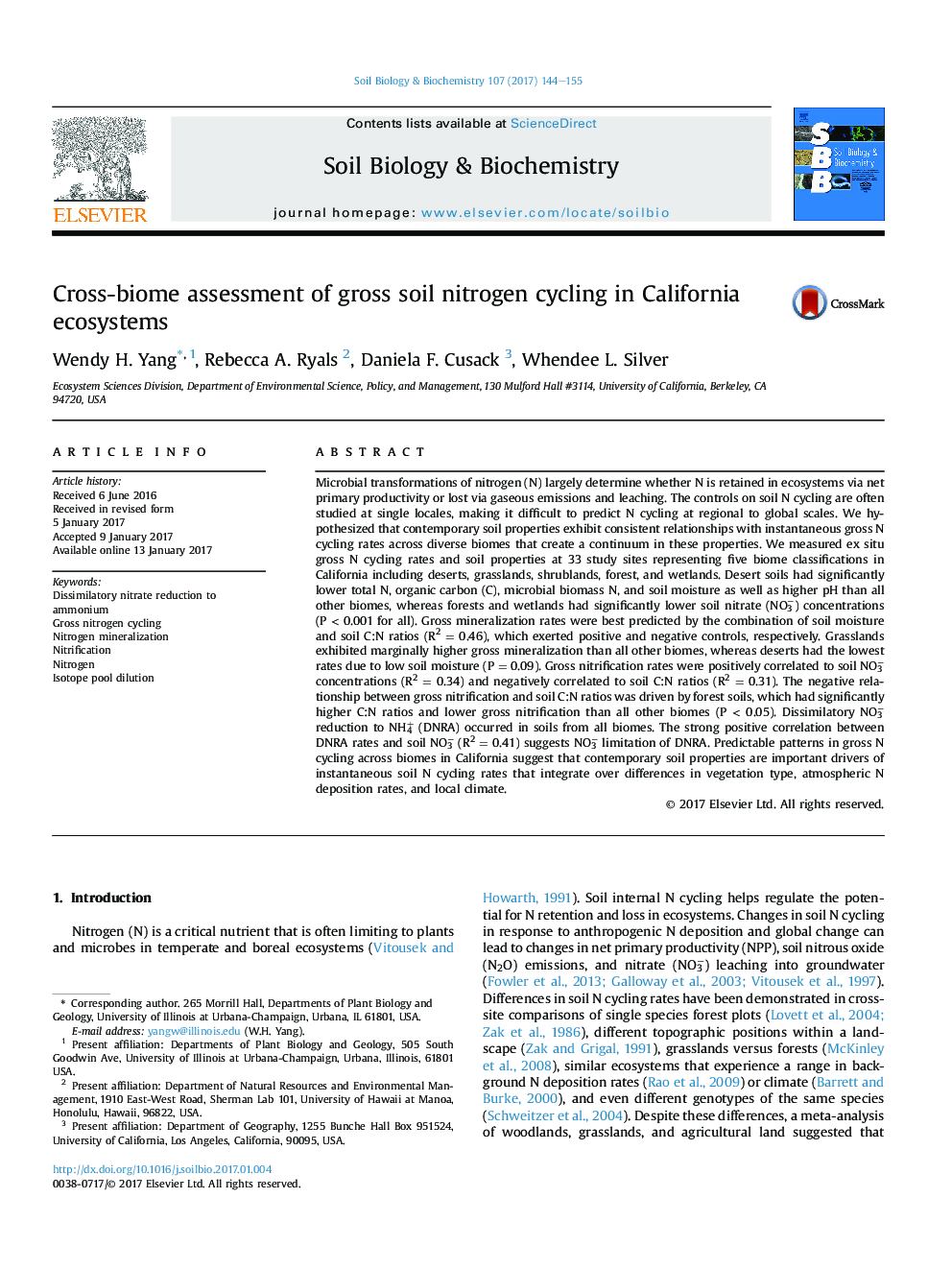| Article ID | Journal | Published Year | Pages | File Type |
|---|---|---|---|---|
| 5516424 | Soil Biology and Biochemistry | 2017 | 12 Pages |
•Soil moisture and carbon:nitrogen (C:N) ratios best predicted gross N mineralization.•Forests had the lowest gross nitrification, correlated to high soil C:N ratios.•Dissimilatory nitrate reduction to ammonium occurred in soils from all biomes.•Soil properties were correlated to instantaneous gross N cycling across biomes.•Desert N cycling was consistent with other biomes despite distinct soil properties.
Microbial transformations of nitrogen (N) largely determine whether N is retained in ecosystems via net primary productivity or lost via gaseous emissions and leaching. The controls on soil N cycling are often studied at single locales, making it difficult to predict N cycling at regional to global scales. We hypothesized that contemporary soil properties exhibit consistent relationships with instantaneous gross N cycling rates across diverse biomes that create a continuum in these properties. We measured ex situ gross N cycling rates and soil properties at 33 study sites representing five biome classifications in California including deserts, grasslands, shrublands, forest, and wetlands. Desert soils had significantly lower total N, organic carbon (C), microbial biomass N, and soil moisture as well as higher pH than all other biomes, whereas forests and wetlands had significantly lower soil nitrate (NO3−) concentrations (P < 0.001 for all). Gross mineralization rates were best predicted by the combination of soil moisture and soil C:N ratios (R2 = 0.46), which exerted positive and negative controls, respectively. Grasslands exhibited marginally higher gross mineralization than all other biomes, whereas deserts had the lowest rates due to low soil moisture (P = 0.09). Gross nitrification rates were positively correlated to soil NO3− concentrations (R2 = 0.34) and negatively correlated to soil C:N ratios (R2 = 0.31). The negative relationship between gross nitrification and soil C:N ratios was driven by forest soils, which had significantly higher C:N ratios and lower gross nitrification than all other biomes (P < 0.05). Dissimilatory NO3− reduction to NH4+ (DNRA) occurred in soils from all biomes. The strong positive correlation between DNRA rates and soil NO3− (R2 = 0.41) suggests NO3− limitation of DNRA. Predictable patterns in gross N cycling across biomes in California suggest that contemporary soil properties are important drivers of instantaneous soil N cycling rates that integrate over differences in vegetation type, atmospheric N deposition rates, and local climate.
